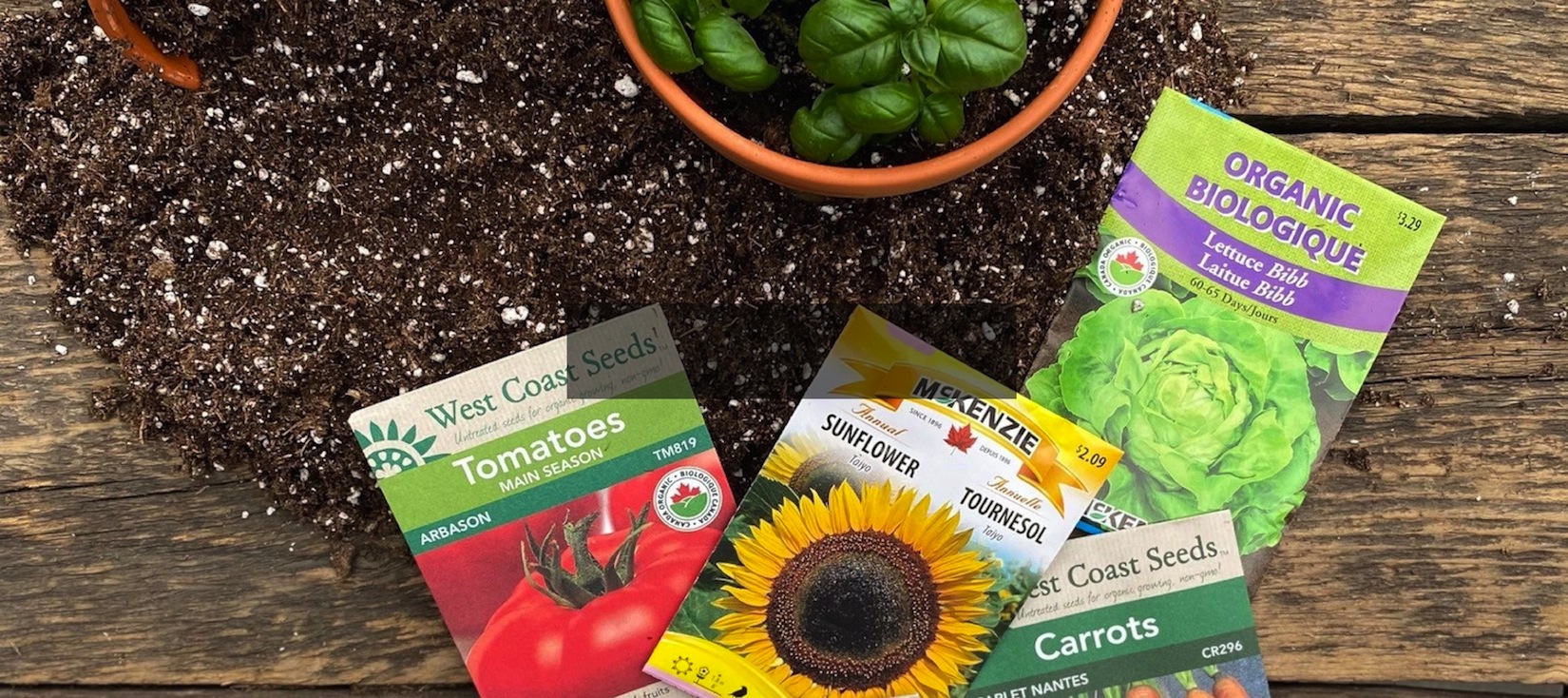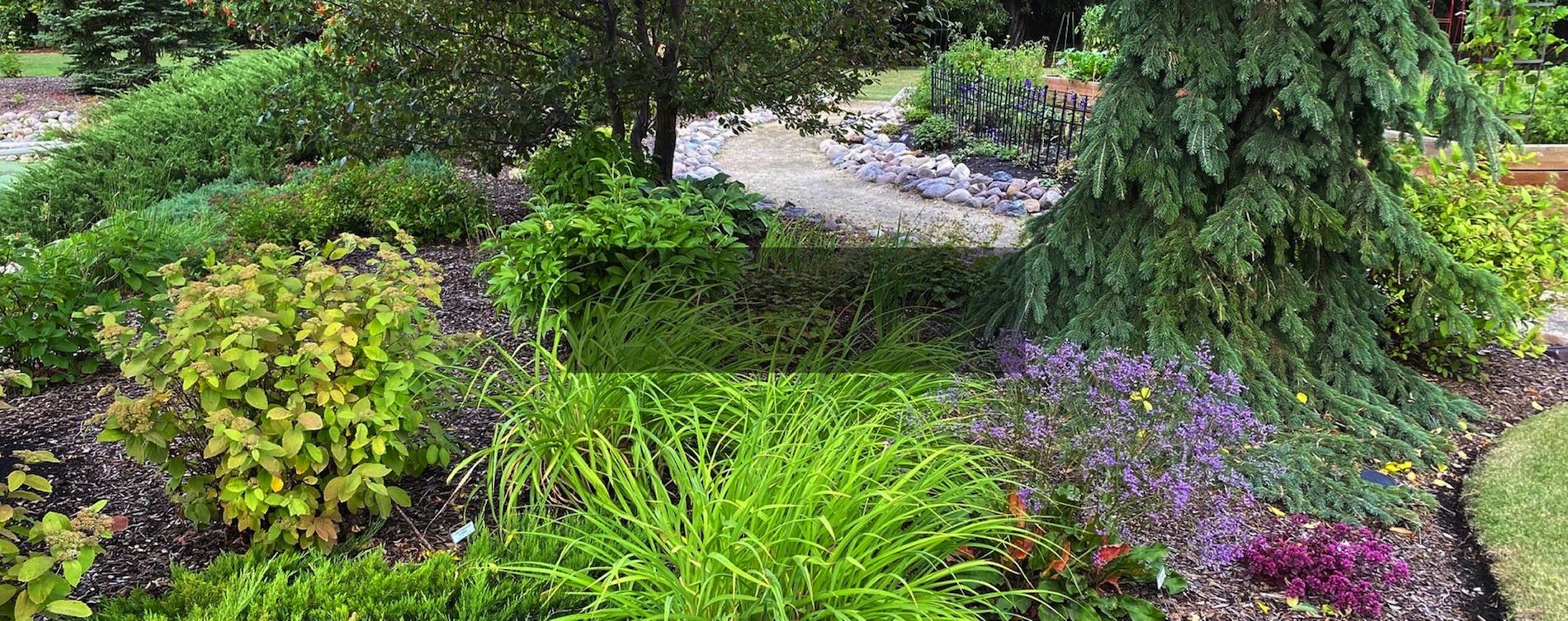Hardy Vines

Vines add vertical interest to any garden and can also act as groundcovers or privacy screens. There are several selections hardy to our area.
Flowering Vines
- Chocolate Vine
- Clematis
- Honeysuckle
- Perennial Sweet Pea
- Wisteria
Foliage Vines
- Bittersweet
- Dutchman’s Pipe
- Grape
- Hops
- Kiwi
- Virginia Creeper
Vines for Shade
- Alpine Clematis
- Big Petal Clematis
- Solitary Clematis
- Viticella Clematis
- Dutchman’s Pipe
- Virginia Creeper
Planting
- Prior to planting dig a hole at least 2-3 times the width of the pot and several inches deeper and add compost or Sea Soil to the planting hole.
- Carefully remove vine from stake and tap rootball out of pot.
- Place rootball into hole, making sure top of the rootball is level with surrounding soil (plant hybrid Clematis 6 inches deeper).
- Throw in a handful of bone meal, then backfill with a mixture of the dug-out soil and compost or Sea Soil.
- Create a “dish” around the base of the plant with the excess soil.
- Water in well with Root Booster/water solution (dilute according to package instructions).
Maintenance
- New vines will require consistent moisture until established, especially in sunny locations. Check for water daily during hot, dry weather.
- Use Root Booster every two weeks during the first year.
- Water established vines deeply once per week during periods of dry weather.
- Add 1-2″ of Sea Soil or compost to the soil around the plants each spring.
- Fertilize established vines at the beginning of each season with bone meal, then follow up every two weeks during the growing season (until mid-August) with 20-20-20 or 15-30-15 (or similar).
- Alternatively, a slow-release granular organic fertilizer such as Dr. Earth Flower Garden (flowering vines) or Dr. Earth All-Purpose (foliage vines) can be added to the soil in early May and in early July.
Pests & Diseases
- Leafhopper and aphids can be significant pests; spray vines with Ambush or Doktor Doom House & Garden.
- In fall, leaves should be raked up to ensure pests do not overwinter.
- Horticultural oil can be applied to vines in spring and fall (while plants are dormant) to clean up any overwintering pests.
- Powdery mildew on hops, Virginia creeper, or honeysuckle can be controlled preventatively with bi-weekly applications of garden sulphur or Safer’s Defender starting in mid-June.
Pruning Hops
- Hops die back to the ground in winter, so should be cut back to ground level each fall or early spring.
Pruning Woody Vines
Most vines will require occasional pruning to remove dead, weak, or diseased growth, or to thin vines out that are becoming crowded. Significant pruning should be done in early spring before growth starts. Minor pruning can be done at any time.
Pruning Grapes
Grapes should be pruned back by about two-thirds each year to encourage strong fruit production. Un-pruned grapes will produce less fruit but will make a great privacy screen. Prune grapes in early March, removing any weak/spindly/crowded growth in the process. Vines may bleed sap if pruned too late in the dormant season.
Pruning Clematis
This will vary depending on the type of Clematis:
Alpine and Big Petal Clematis
Bloom in spring on old wood; prune lightly just after flowering to avoid losing next year’s blooms.
Hybrid Clematis
• Pruning Group B is capable of blooming on both old and new wood, giving you two flushes of flowers. These usually die back, but after a mild winter some of the old growth may survive and bloom if left un-pruned. Prune back to a set of healthy buds in spring, removing all the dead wood (down to ground level if needed).
• Pruning Group C blooms on new growth only, so cut back to a healthy set of buds about a foot above the ground in spring.
Viticella and Texensis Clematis
These are pruned the same as Pruning Group C hybrid clematis.
Solitary and Bush Clematis
These die back to the ground, so are cut back to ground level in fall or early spring.
Here are a few of the more popular choices of vines:
Flowering Vines

Alpine and Big Petal Clematis
Exceptionally hardy vines for both sun and shade, with bell shaped blooms in tones of pink, white, blue and purple. Vines will leaf out and flower on old wood.

Hybrid Clematis
These large flowering Clematis showcase blooms in a variety of colours, smothering foliage in summer. Plants require a sunny location and enjoy a cooler root zone (mulch plant bases, or shade with a perennial groundcover).

Viticella Clematis
Feature blooms similar to hybrids, however tend to overwinter more reliably in our area. Prune back to 1-2 feet each spring, since these bloom on new growth. Sun to part shade.

Honeysuckle
Showy trumpet shaped blossoms in shades of scarlet and orange are a delight for hummingbirds. Growth is produced on old wood each season, an annual thinning of branches to reduce crowding is recommended. Full sun.
Foliage Vines

Bittersweet Vine
Glossy leaves produced on old wood each season, followed by brilliant orange berries and yellow foliage in late summer/fall. Depending on variety, a male and female variety may need to be planted together. Full to part sun.

Grapes
We have many excellent varieties of hardy grapes suitable for eating and juicing. Large vines produce a bounty of fresh foliage each year, followed by fruit in late summer. Most selections benefit from light frosts before harvesting. Full sun required; leafhopper insects can be troublesome.

Hops
An excellent foliage vine for sun or shade, Hops die back to the ground and emerge fresh each spring. A vigorous, fast grower. There are many selections available, including selections suitable for home brewing.

Kiwi
Beautiful ornamental foliage emerges on old wood each spring, with unique pink, silver and white variegation. Following scented white blooms are small, edible kiwi fruits. A great choice for sun or partial shade.

Virginia Creeper
This popular vine is incredibly hardy. Glossy foliage emerges on old wood in spring, turning a beautiful red in autumn. Vines become quite large, so provide adequate spacing. Full sun or partial shade; leafhoppers can be troublesome.





